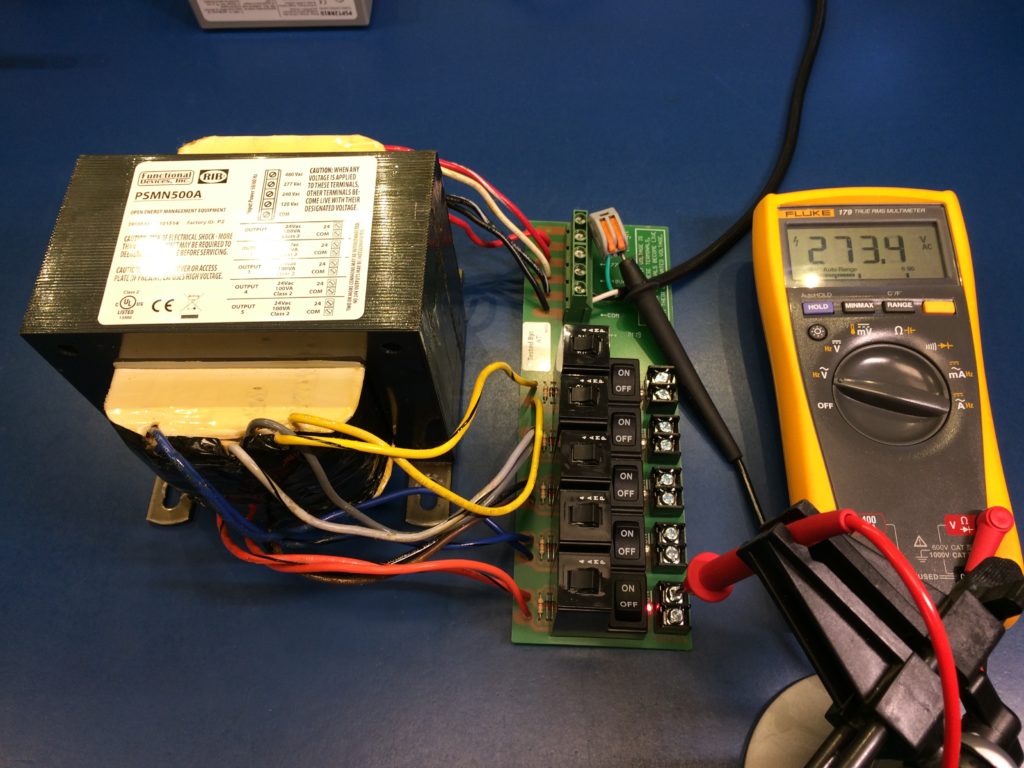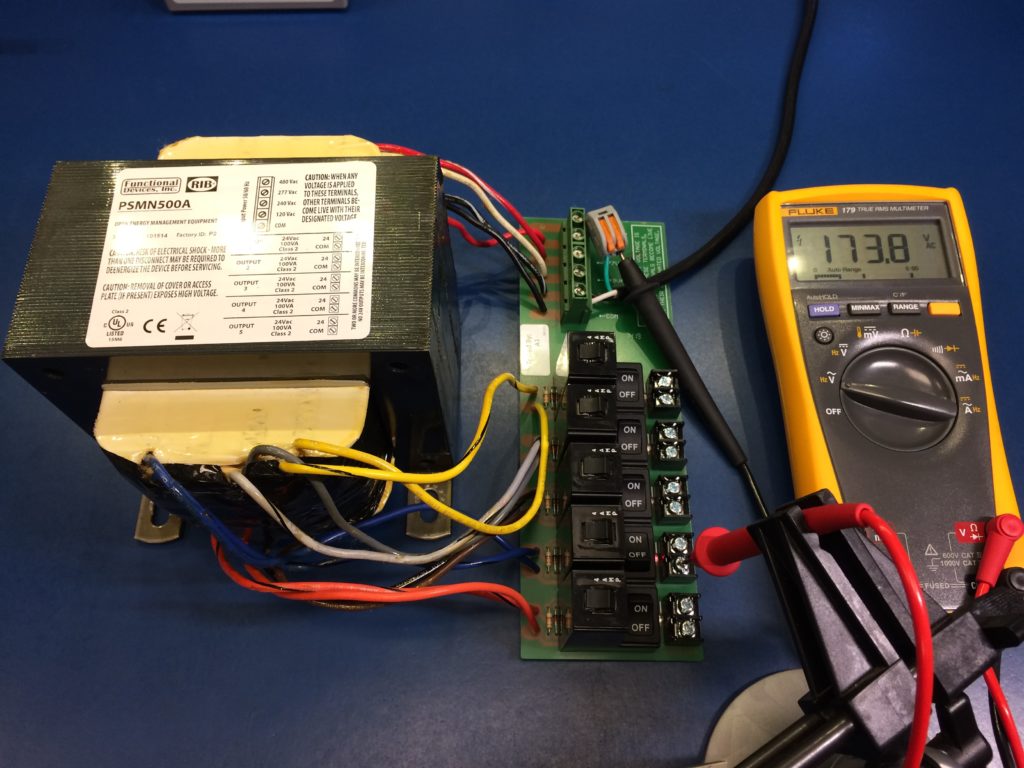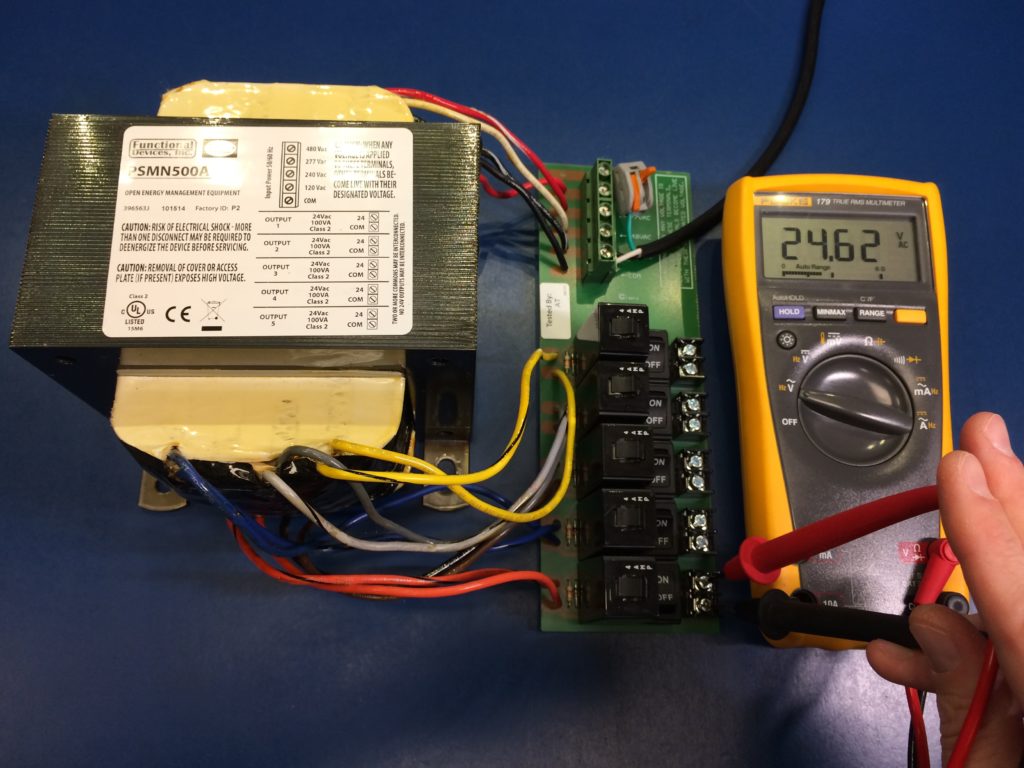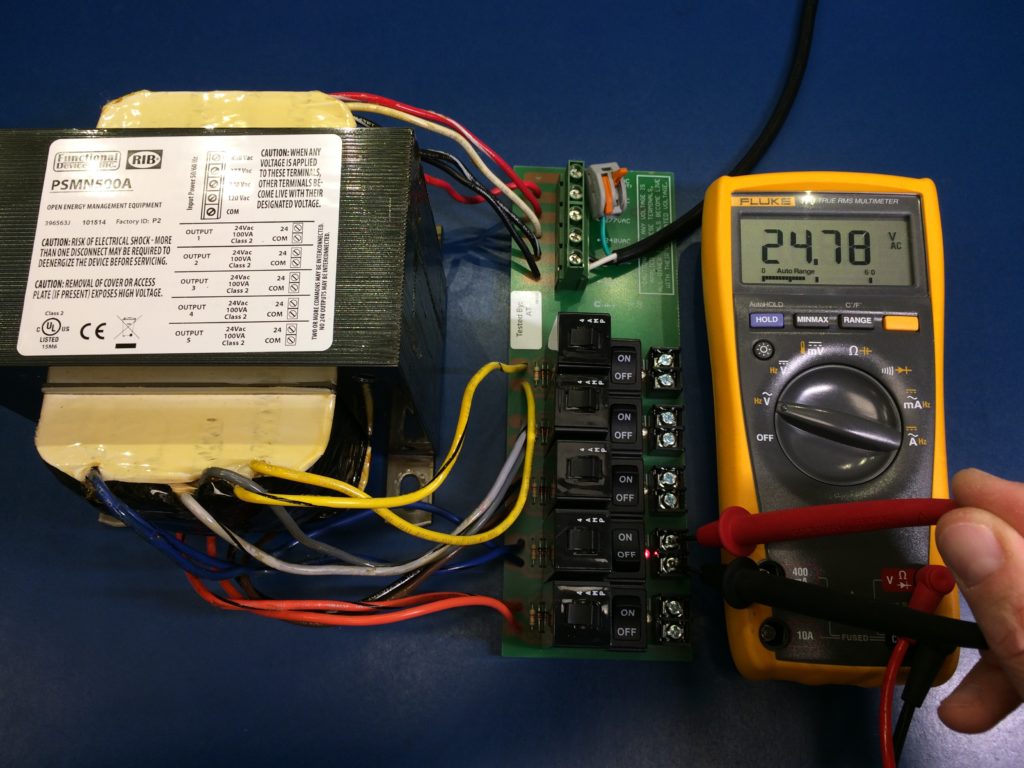Measuring Power Supply and Transformer Output Voltage

We often get technical support calls from customers or installers concerned with the voltage reading on an output of one of our transformers or power supplies. In nearly every case, it is an issue with where the reference probe is connected. This blog contains some images of incorrect and correct probe placement when measuring those outputs. All the images in this blog use a PSMN500A as the example. The same measuring technique applies to our entire line of AC Power Supplies, as well as our transformers.
Figures 1 and 2 show incorrect measurement techniques where the reference probe (black) is connected to the ground connection of the cord supplying power to the transformer primary. Our transformers have isolation between the primary and the secondary. Ground can only be used as a reference point if the COM terminal of the measured secondary is connected to ground as well. If that is not the case, the reading will be a floating, or phantom, voltage. If your meter has a Low Impedance setting, measuring this same spot should yield zero volts, instead of the 273.4 Vac shown in the image.
Figure 1

Figure 2

When the measurement is taken with the correct reference point (the COM terminal), the reading will be accurate. As you can see, the meter is reading approximately 24 Vac in Figures 3 and 4. It is good practice to probe directly at the output terminals to get an accurate reading. If your secondary output commons are bonded to ground or not, measuring in this manner with yield the correct result. The same applies to the outputs of our enclosed power supplies.
Figure 3

Figure 4

If you are ever measuring the output voltage of a Functional Devices product, and the reading is well outside of your expectation, double-check your reference probe placement. It is always best to measure directly at the source. Do not assume that using ground, or the enclosure as a reference point, will yield an accurate reading.
